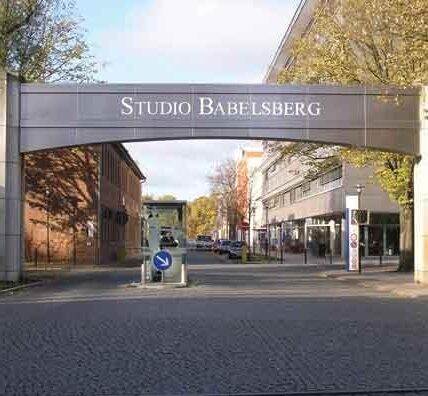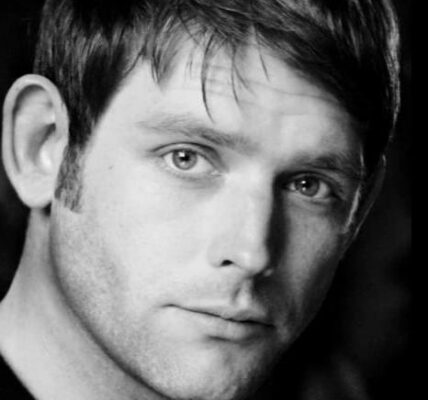I started off in press and public relations for Hampton Court Palace. We used to get a lot of commercial filming requests and didn’t know what to do with them. One of the Palace directors said to me, ‘You look after news filming, can’t you do this as well?’ I tried to explain there’s a difference between two people with a small camera and a tripod and a crew of 100 trying to re-create Tudor England! But I’m always up for a challenge, so I agreed to give it a go.
I wanted to prove that facilitating large shoots was worth the time and effort financially, and that we could cope with the logistical challenges. After dipping our toe in the water with a couple of feature films, they were soon persuaded that it was. By then I was hooked too; I just loved working with the production team to overcome the creative challenges and ensure the shoot ran smoothly.
From Hampton Court Palace I moved to Film London, where I worked with the main industry guilds and trade associations on developing a Code of Practice for filming in London and helped productions wishing to film in the Capital. There was never a dull day, from working with Canary Wharf on the best way to shoot a car into the dock for Basic Instinct 2 to helping with a car chase past St James’ Palace for National Treasure: Book of Secrets. I then moved from Film London to Network Rail, setting up their filming division from scratch and managing the very first T-Mobile advert in Liverpool Street Station and scenes for the final Harry Potter film at King’s Cross. It was so emotional seeing the Hogwarts Express pulling out for the last time! I was there for four years before moving to Heathrow in October 2011.
Heathrow is, in some ways, easier to manage than Network Rail; effectively it’s just one location, whereas Network Rail’s portfolio was UK wide. But while Network Rail would get 200 to 250 shoots a year, last year Heathrow accommodated over 1000 shoots and received requests for many more. Before I arrived, all of these requests were being sent to an already overstretched media team. This was unsustainable and there was an appreciation internally that they needed to separate out the commercial shoots which required specialist knowledge both of the production sides and how to work within the airport.
Heathrow is probably the busiest airport in Europe, so any filmmaker has to be prepared for the sheer volume of people and the security issues they present. In terms of security, everything that applies when you go on holiday applies equally if you are filming, but I’m always looking for ways to minimise the impact on a shoot. For example, instead of taking large volumes of filming equipment through the standard security channels, which would be hugely impractical, we provide a facility called Rapid Goods Screening in which equipment is taken to a specialist warehouse for large-scale screening before being taken airside, ready and waiting for the next day’s shoot.
As a result of our unique location, we can also suggest also things that that filmmakers wouldn’t expect. Take lighting, for example; you can’t bring in a generator because of the risk of explosions, so we recommend helium balloon lighting. That’s a great solution because it’s an inert gas, means we don’t have trailing cables and also don’t need to arrange local power. We have to be inventive, as filming can’t impede the normal operation of the airport. When crews work with us to find a compromise, such as making sure their equipment and crew is minimal, then we can usually get them the shot that they want.
There are, of course, instances where a director is set on a something which sounds easy on paper, but which, in reality we just can’t accommodate, even if we’d like to. Things like filming security or immigration for example; that’s a big no-no. And yet it’s often it’s the more tricky sounding shots—like getting on the tug-road at the back of the runway to film the plane taking off—that are no problem because for us, that’s a controlled environment. The main thing is to make sure that we have enough time. We ask for a minimum of four working days’ notice for any shoot but, fortunately, most big productions will give us months to prepare.
As well as the terminal buildings and runways, we also have other property gems on the footprint of the airport that most people aren’t aware of. For example, we’ve got a business park that is lots of listed 1940s Nissen huts, which is like a little film set in its own right. You wouldn’t necessarily think ‘We’ll go and shoot that period piece at Heathrow airport’ but, in theory, we could help. We’ve also got a small bunker with periscope and cargo warehouses. In terms of behind the scenes stuff, we’ve got the new Heathrow by Invitation (HbI) suites, which can be used for greenroom facilities, meaning that the talent on set can have some privacy.
And we’re not just offering our services as a location, but also as a hub for small businesses within the film industry that are looking for accommodation. It might not be obvious to think of Heathrow as a landlord, but we’ve got potential production office space available for rent, which is perfectly located for Pinewood and Ealing studios. That means we can be so much more than just the place where the film executives, filmmakers and talent fly in and fly out; in many ways Heathrow is like a self-contained film studio with a variety of locations, sets and production accommodation!
I’m discovering that Heathrow is a location with unique challenges but also unique opportunities. My motivation is to work with production teams to make sure they get the best possible result whilst they’re here and I’m looking forward to getting properly struck in… after the Olympics of course!














